The bold yellow flowers of forsythia, a shrub introduced from Asia, are a sure sign of spring in the temperate U.S. (zones 5 to 8), but that is a one-act show. Other than offering cover for some birds, forsythia has little value for wildlife. For a more complete show, consider spicebush (
Lindera benzoin). This eastern U.S. native has pale yellow flowers in the early spring, spicy scented foliage in summer and bright red berries and yellow foliage in the fall. It also hosts several species of native swallowtail butterflies.
Spicebush does need moist soil, but it’s much more tolerant of shade than forsythia. It is often found filling the understory of moist woodlands and also along streambeds. In these areas it grows as an open shrub or small tree, reaching for gaps in the forest canopy. In sunnier locations it is more densely branched and will flower and fruit more prolifically, as long as it has sufficient moisture. Spicebush is relatively slow growing, and once mature it will need little maintenance.

Richard Orr
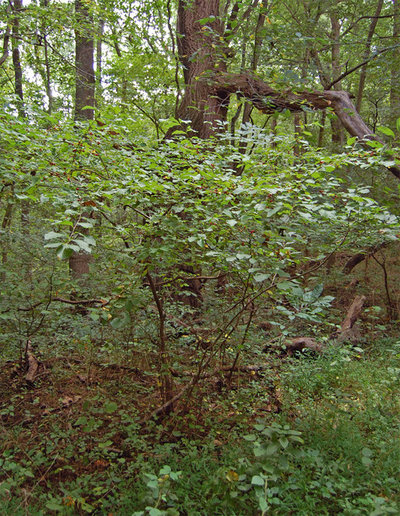 Botanical names: Lindera benzoinCommon names:
Botanical names: Lindera benzoinCommon names: Spicebush, northern spicebush, Benjamin bush, spicewood
Origin: Southern Maine to northern Florida and west to Missouri and Texas
Where it will grow: Hardy to -30 degrees Fahrenheit (USDA zones 4 to 9; find your zone)
Water requirement: Naturally grows in moist areas but will tolerate dry soils
Light requirement: Its native habitat is moist deciduous woods, and it will tolerate full shade; it also grows in full sun with sufficient moisture
Mature size: Typically 6 to 12 feet tall with a similar spread
Shown: Spicebush growing in a shady location. Note its open form.
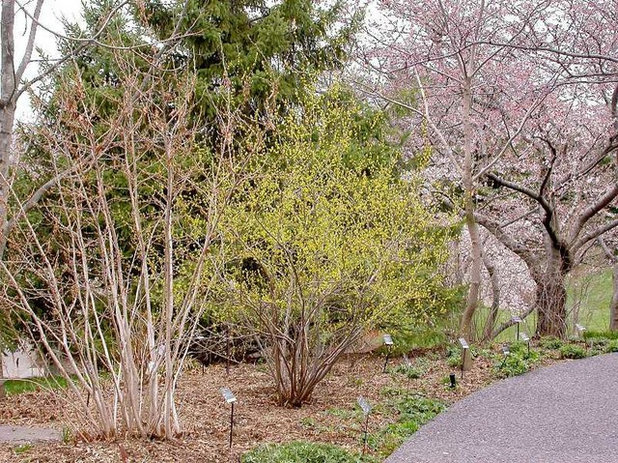
Missouri Botanical Garden
Benefits and tolerances: Salt resistant; will grow near roadside culverts; shade tolerant; high wildlife value
Seasonal interest: Early spring flowers about the same time as the nonnative forsythia; masses of blooming spicebush give the impression of a yellow mist, not as in-your-face as the yellow of forsythia; the fall foliage is pale yellow; female plants bear red berries in late summer and early fall that are favored by many species of birds
When to plant: When the soil is workable; spring and fall are best
Shown: Grown in a sunnier location, this spicebush has more flowers and denser branching.
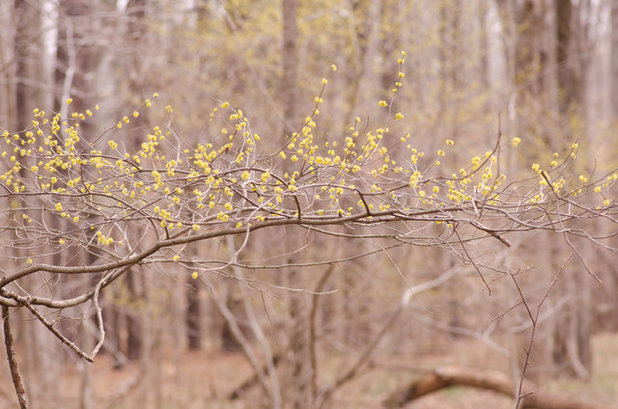
Suzanne Cadwell
Distinguishing traits. The leaves and twigs are aromatic; they have a spicy, citrusy smell when crushed and can be used to brew a slightly sweet and astringent tea. American Indians used an infusion of the bark for a variety of ailments and as a “blood purifier.”
The small yellow flowers are clustered at the base of the leaves. Flower buds form in the summer and bloom the following spring.
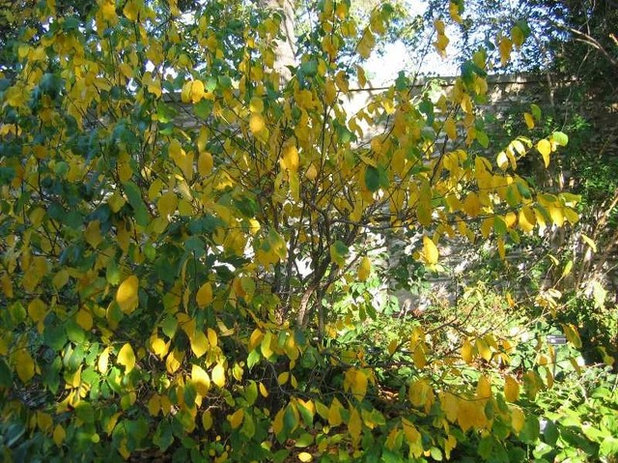
Missouri Botanical Garden
The fall foliage of spicebush is a clean yellow color.
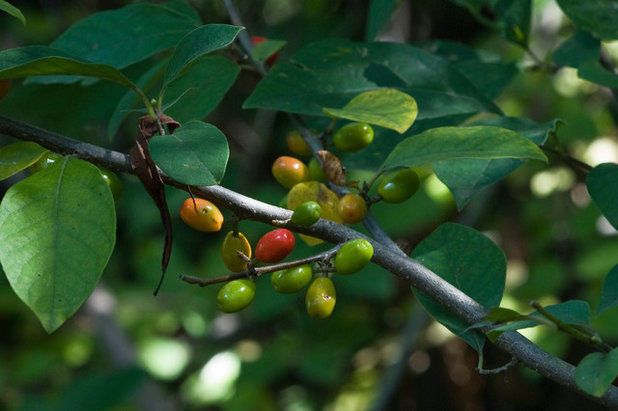
Michael Huft
Birds love the berries of spicebush, which ripen and turn red in mid to late September in central Maryland; they taste similar to allspice.
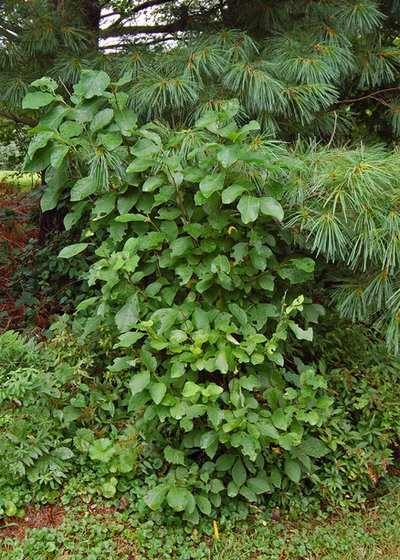 How to use it.
How to use it. Plant spicebush in masses, in shady sites and to support and encourage wildlife. It can add interest to a mixed hedgerow and be effectively massed in the understory of shade trees. Planting it in masses or with a dark background will show the spring flowers better.
While spicebush is found mainly in shaded woodlands, it will grow well in full sun, given enough soil moisture. More sun results in greater flowering, so if you use it as a single specimen, it should get at least partial sunlight for the best floral effect. Plants will be bushier and produce more flowers in sunnier locations.
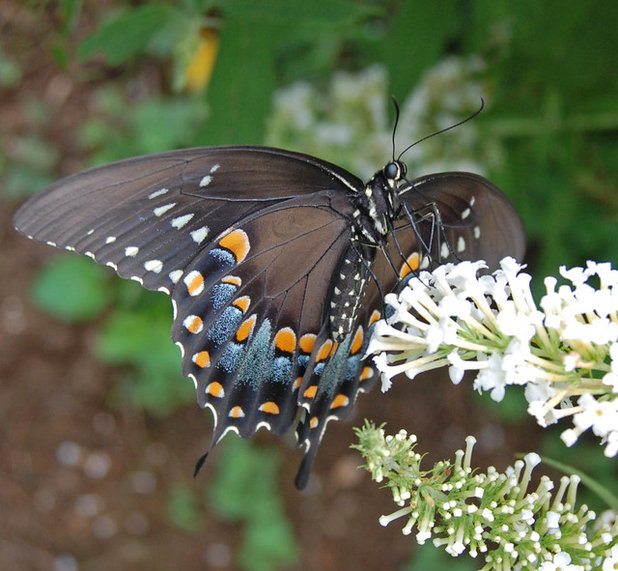
Spicebush serves as the host plant for a number of native swallowtail butterflies, including this spicebush swallowtail (
Papilio troilus).
Learn more about butterfly gardening
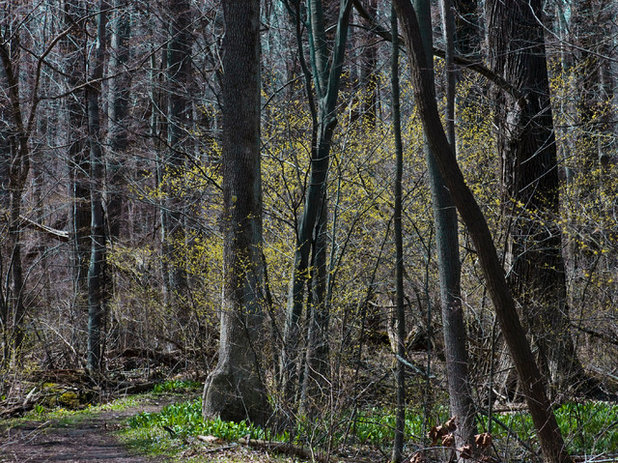
Michael Huft
Planting notes. Spicebush is difficult to transplant and is probably best grown from container stock, although I have had good survival rates with bare-root plants. The optimal soil pH for this plant is 4.5 to 6.5.
There are separate male and female plants. The male flowers, with long stamens, are slightly showier, but only female plants have the bright red berries. To get the most benefit from this species, you need both female and male plants (at least one of each). If there are not other spicebushes nearby, I recommend getting at least three seed-grown plants to improve the odds of having both male and female plants. Five or more plants would improve the odds even more. There are two named male cultivars: ‘Green Gold’ and ‘Rubra’, but I have not seen these for sale yet.
Shown: These plants show the yellow-mist effect in a deciduous woodland in early spring.





